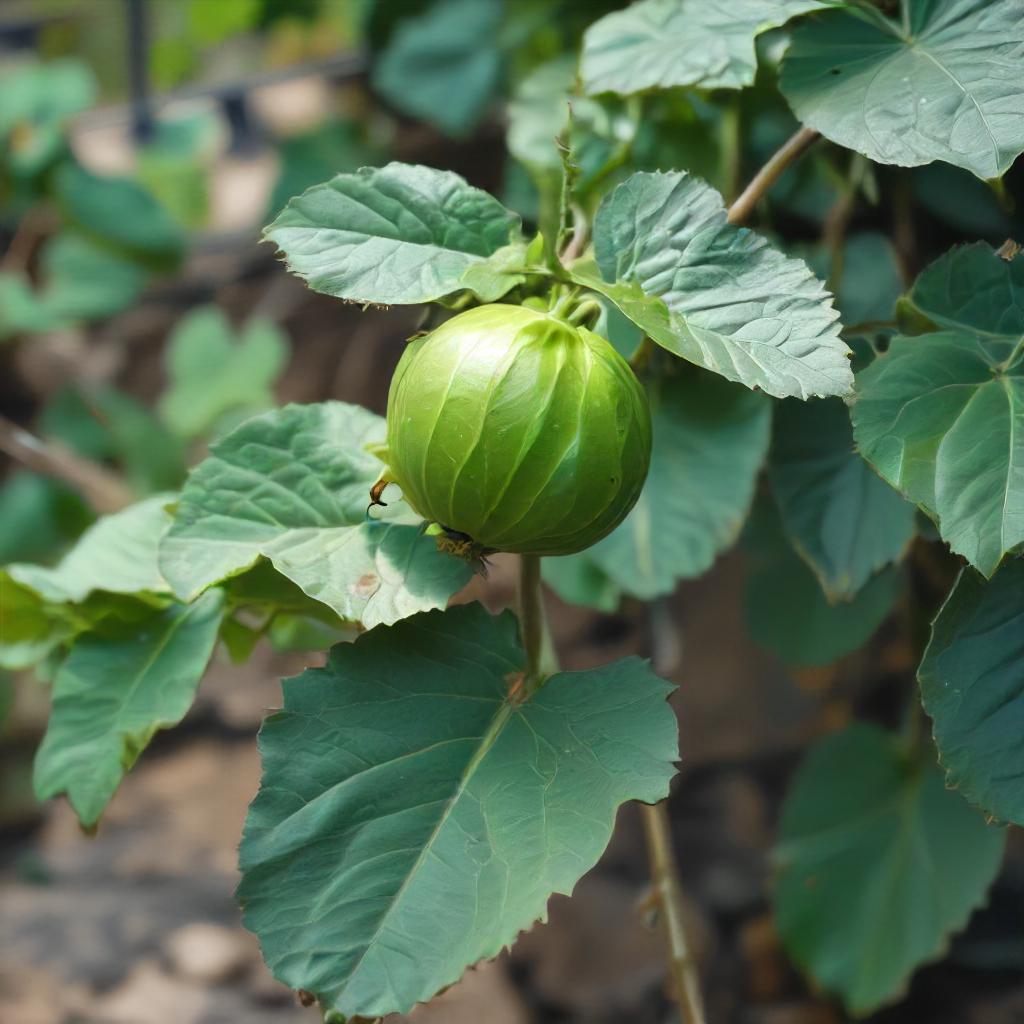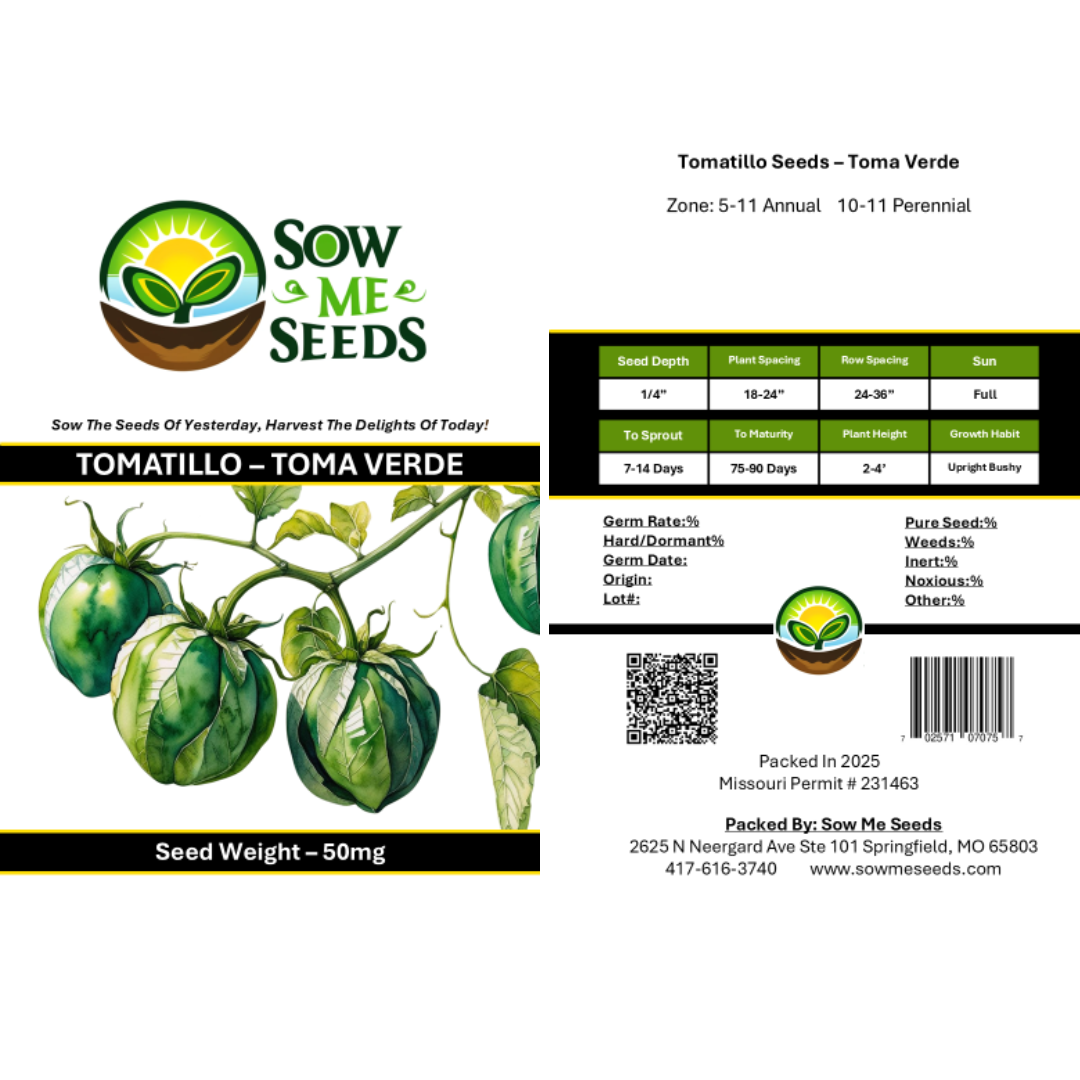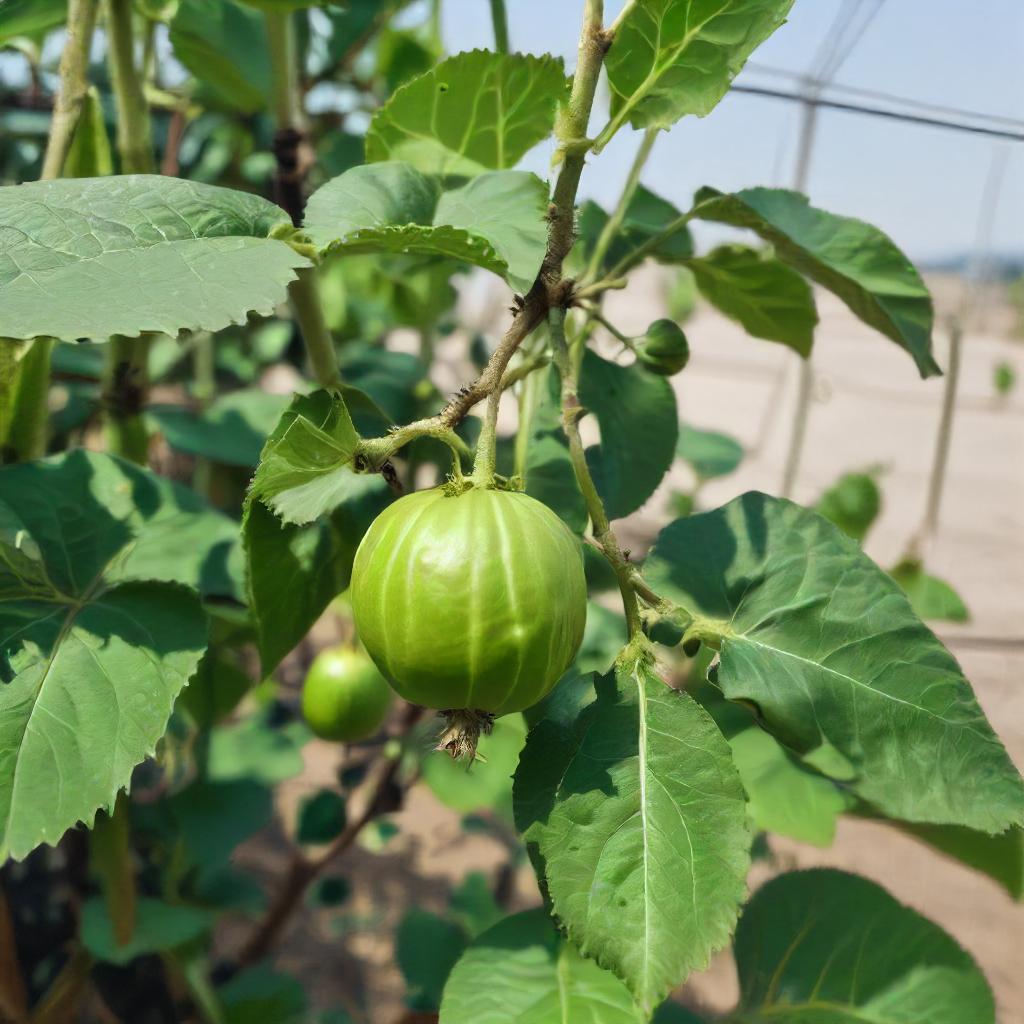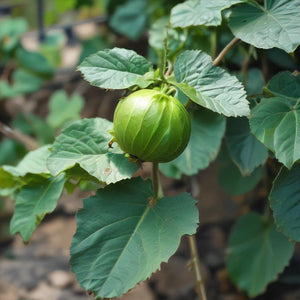- Hardiness Zone: 5-11 Annual
- Hardiness Zone: 10-11 Perennial
Seed Depth: 1/4 inch
Seed Spacing: 18–24 inches
Row Spacing: 36–48 inches
Sunlight: Full sun
Days to Sprout: 7–14 days
Days to Maturity: 75–90 days
Growth Habit: Upright, sprawling annual
Sunlight: Requires full sun, with at least 6–8 hours of direct sunlight daily.
Soil Type: Prefers rich, well-drained soil with a pH of 6.0–7.5. Add compost or organic matter to improve fertility.
When to Plant: Start seeds indoors 6–8 weeks before the last frost. Transplant outdoors when temperatures are consistently above 50°F.
Direct Sowing: Not recommended, as tomatillos require a long growing season.
Indoor Sowing: Sow seeds 1/4 inch deep in trays or pots. Transplant seedlings when they are 4–6 inches tall.
Succession Planting: Not typically needed; plants produce prolifically throughout the growing season.
Watering: Water deeply and consistently, keeping the soil evenly moist but not soggy. Mulch helps retain moisture.
Fertilizing: Apply a balanced fertilizer at planting and again during fruiting for optimal yields.
Pruning: Remove any damaged or crowded stems to improve airflow and sunlight penetration.
Pest and Disease Control: Watch for aphids, cutworms, and whiteflies. Use organic pest control methods as needed.
When to Harvest: Harvest when the husks are fully expanded and begin to split open, revealing the firm, green fruit inside, typically 75–90 days after planting.
How to Harvest: Gently twist or clip fruits from the plant. Handle carefully to avoid bruising.
Seed Collection: Allow some fruits to over-ripen on the plant. Collect seeds from the pulp, rinse, and dry thoroughly.
Storing Seeds: Store seeds in an airtight container in a cool, dry place.
Why You’ll Love It
Zesty and Tangy: Bright, tart flavor adds a signature punch to sauces, salsas, and stews.
Prolific Producer: High-yielding plants produce clusters of firm fruits that ripen inside their husks.
Compact and Early: Matures faster than many tomatillo varieties — great for shorter growing seasons.
Culinary Staple: Essential for homemade salsa verde and authentic Latin American cooking.
Plant Characteristics
Height: 24–36 inches
Growth Habit: Bushy and spreading, similar to tomatoes but more sprawling
Fruit Type: Small to medium green fruits with a sticky skin enclosed in tan husks
Days to Maturity: 60–75 days
Hardiness: Warm-season annual
Flavor and Culinary Uses
Flavor: Bright, tart, and slightly citrusy with a firm, juicy texture
Culinary Uses: Best for salsa verde, sauces, chutneys, and grilling — can also be roasted or stewed
Companion Planting Tips
Good Companions: Peppers, onions, basil, and marigolds
Avoid Planting Near: Corn or heavy feeders that may compete for nutrients
Bonus Benefit: Husks help protect the fruit from pests and sunscald during ripening
Common Issues and Solutions
Poor Fruit Set: Plant at least two tomatillo plants for cross-pollination — they won’t self-pollinate like tomatoes
Husk Without Fruit: Ensure full sun and proper spacing to support pollination and fruit formation
Yellowing Leaves: Feed with a balanced fertilizer and ensure well-drained soil
Seeds Per Packet
| 50mg | Approximately 70 |
| 750mg | Approximately 1,050 |
Why You’ll Love It
Zesty and Tangy: Bright, tart flavor adds a signature punch to sauces, salsas, and stews.
Prolific Producer: High-yielding plants produce clusters of firm fruits that ripen inside their husks.
Compact and Early: Matures faster than many tomatillo varieties — great for shorter growing seasons.
Culinary Staple: Essential for homemade salsa verde and authentic Latin American cooking.
Plant Characteristics
Height: 24–36 inches
Growth Habit: Bushy and spreading, similar to tomatoes but more sprawling
Fruit Type: Small to medium green fruits with a sticky skin enclosed in tan husks
Days to Maturity: 60–75 days
Hardiness: Warm-season annual
Flavor and Culinary Uses
Flavor: Bright, tart, and slightly citrusy with a firm, juicy texture
Culinary Uses: Best for salsa verde, sauces, chutneys, and grilling — can also be roasted or stewed
Companion Planting Tips
Good Companions: Peppers, onions, basil, and marigolds
Avoid Planting Near: Corn or heavy feeders that may compete for nutrients
Bonus Benefit: Husks help protect the fruit from pests and sunscald during ripening
Common Issues and Solutions
Poor Fruit Set: Plant at least two tomatillo plants for cross-pollination — they won’t self-pollinate like tomatoes
Husk Without Fruit: Ensure full sun and proper spacing to support pollination and fruit formation
Yellowing Leaves: Feed with a balanced fertilizer and ensure well-drained soil
Seeds Per Packet
| 50mg | Approximately 70 |
| 750mg | Approximately 1,050 |





Share and get 15% off!
Simply share this product on one of the following social networks and you will unlock 15% off!